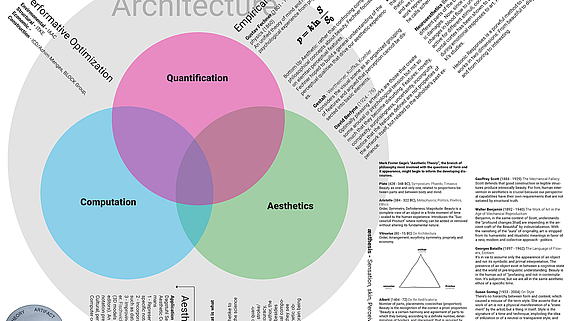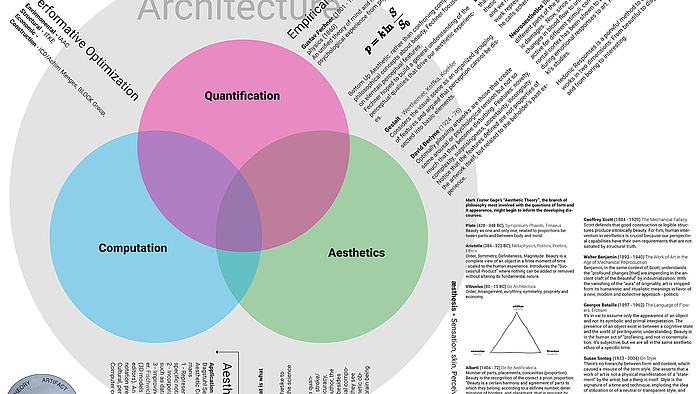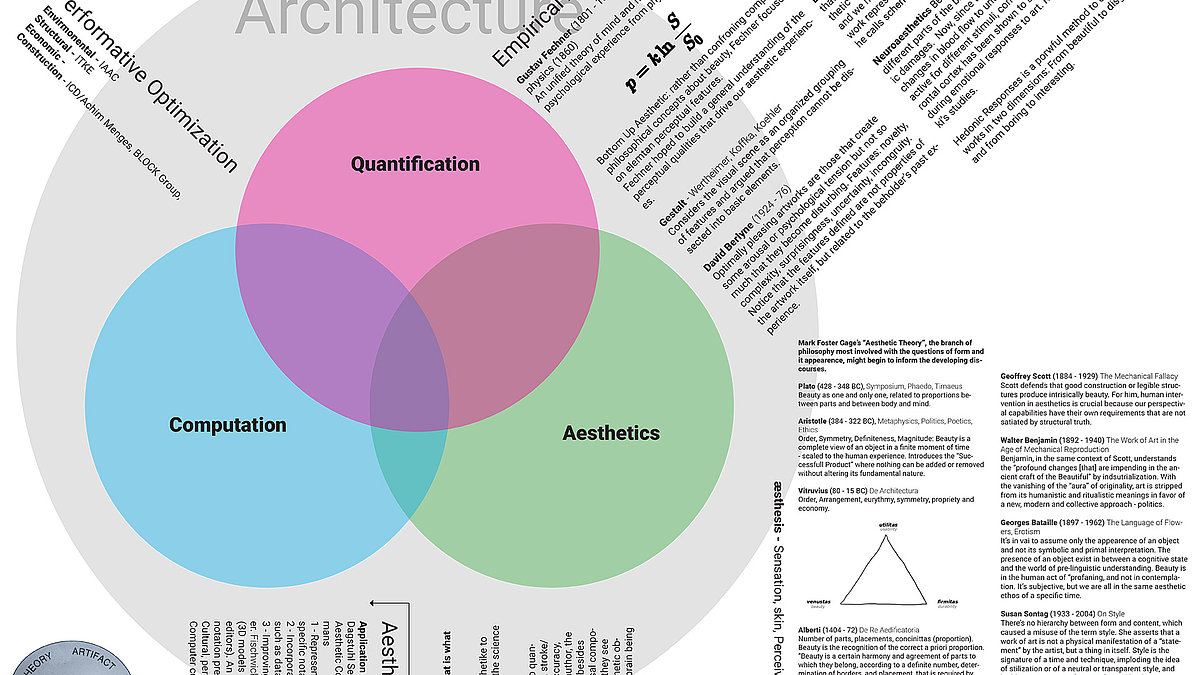

 ©
Victor Sardenberg
©
Victor Sardenberg
Thesis
Thesis Topic:
The thesis seeks to establish a computational framework for quantifying the aesthetic experience of architecture. It builds on the 19th Century research of Gustav Fechner - that correlated psychological experience from physical stimulus - and the 20th Century work of Max Bense - that developed a theory of the "aesthetical state" of the works of art as realized signs, sign processes and sign systems (Walter, 2000) - and implements contemporary data science for optimisation and optioneering of design solutions. The scope of the thesis is limited to the image domain.
Preface:
Since the 1990s, with the emergence of new digital design tools, innovative materials and numerically controlled fabrication, a new formal vocabulary arose for architects (Kolarevic 2003). After solving the prohibitive issues of designing and producing intricate and complex forms, a disciplinary question came forward to all practitioners and critics: How to evaluate form?
With the proliferation of computers within the field of architecture and with the increasing computational power, designers relied on advanced CAD tools for generating and analysing form under various criteria such as environmental performance, cost and profit optimisation and structural behaviour. More recently, the simulation of user behaviour became another measure for decision-making in design across different scales (Schumacher, 2016). This thesis intends to introduce computational tools to evaluate the aesthetic experience of architectural environments.
Architecture raises mainly questions of qualities - spatial effects, surface textures - and has its disciplinary problems (inside x outside relationship, how a building touches the ground, how surface produces volume, mass x voids) and this can hardly be quantified (Kipnis, 2013).
However, there is a long tradition in attempting to quantify the visual experience in artworks but also in applied visual practice. Recent research has been conducted, especially in marketing and advertisement to understand customer behaviour, for example, eye-tracking websites (Zhenyou, 2018). Also, the Millennial and Z generations have been using social media as an aesthetic evaluation engine through liking and disliking in apps such as Instagram or Tinder.
This research aims to provide a practical and theoretical framework for quantitative aesthetics in the architectural design process as guidance for architectural design, empowering the discipline and practice to implement it to support design decisions.
Research Scope:
This research focuses on quantitative aesthetics as criteria and how to implement it in design-optioneering. It relies on recent developments in computer science to overcome the shortcomings of the research by Gustav Fechner and the Stuttgart School and creates a framework of quantitative aesthetics to inform design decision making.
Info
Desired Degree:
- Dr.Ing.
Relevant Classes:
Pitch: Swiping Left and Right
Relevant Publications:



